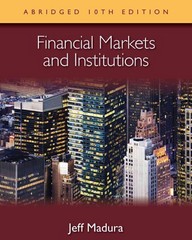YUCULUI IV 11 point . You are given the following information: - Bond A is a 1-year, 0-coupon bond with face value $2,000 and YTM = 4% -Bond B is a 3-year, 3% coupon bond with face value $1,000 and YTM = 3% - Bank X is offering Product X (which is fairly priced). If you buy Product X then: At t = 0 you have to pay $4,000 to Bank X At t =1 you have to pay $5,000 to Bank X . At t = 2 Bank X pays you $6,000 Att = 3 you have to pay $7,000 to Bank X You work at Bank Y, and you can sell Product Y to a client. For every one unit you sell: At t=0 the client pays Bank Y $8,000 At t=1 the client pays Bank Y $3,000 Att = 2 Bank Y pays Z to the client At t = 3 Bank Y pays 11,000 to the client where Z is $100 less than what it would be if Product Y were fairly priced. Assume that you execute the following arbitrage strategy, where your arbitrage profit wil realized at t = 2: You sell Y units of product Y to a client You buy A units of Bond A You buy B units of Bond B You buy 2 units of Product X from Bank X . . Which of the following equations correctly specifies the cash inflow equals cash outflow t = 3 based on how the variables have been defined above? B(1,030) + Y(11,000) = 217,000) B(1,030) + (11,000) + (7,000) = 0 YUCULUI IV 11 point . You are given the following information: - Bond A is a 1-year, 0-coupon bond with face value $2,000 and YTM = 4% -Bond B is a 3-year, 3% coupon bond with face value $1,000 and YTM = 3% - Bank X is offering Product X (which is fairly priced). If you buy Product X then: At t = 0 you have to pay $4,000 to Bank X At t =1 you have to pay $5,000 to Bank X . At t = 2 Bank X pays you $6,000 Att = 3 you have to pay $7,000 to Bank X You work at Bank Y, and you can sell Product Y to a client. For every one unit you sell: At t=0 the client pays Bank Y $8,000 At t=1 the client pays Bank Y $3,000 Att = 2 Bank Y pays Z to the client At t = 3 Bank Y pays 11,000 to the client where Z is $100 less than what it would be if Product Y were fairly priced. Assume that you execute the following arbitrage strategy, where your arbitrage profit wil realized at t = 2: You sell Y units of product Y to a client You buy A units of Bond A You buy B units of Bond B You buy 2 units of Product X from Bank X . . Which of the following equations correctly specifies the cash inflow equals cash outflow t = 3 based on how the variables have been defined above? B(1,030) + Y(11,000) = 217,000) B(1,030) + (11,000) + (7,000) = 0







